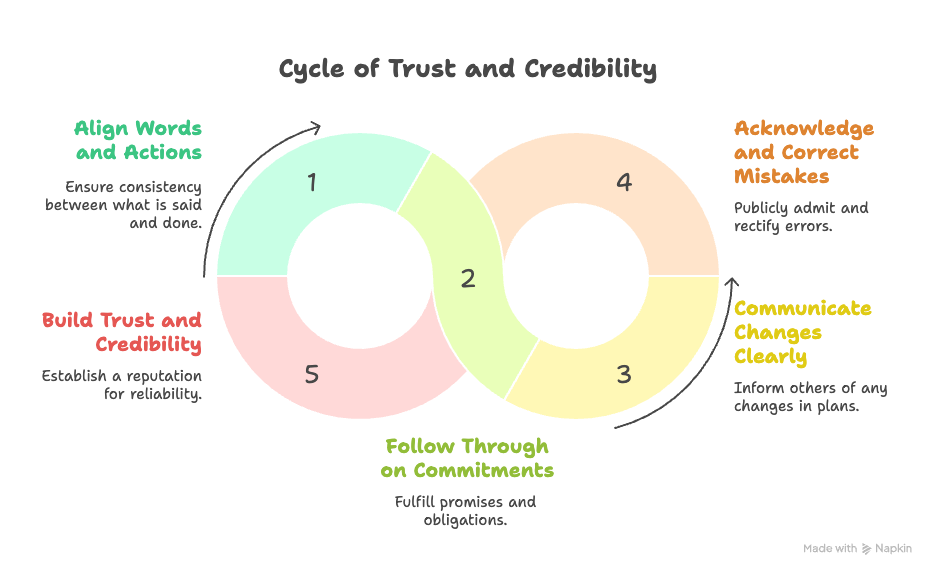
Topic 1: Chapter 1: Verbal and Non-Verbal Communication

Chapter 1: Verbal and Non-Verbal Communication
1. Understanding Verbal Communication: Words & Tone
Verbal communication is the foundation of effective interaction between individuals, both in personal and professional environments. It involves the use of words, vocabulary, and sentence structure to convey thoughts, intentions, and information. A key element of verbal communication is tone—a speaker’s tone can express enthusiasm, confidence, empathy, or even nervousness and hesitation. For instance, the same statement delivered in a friendly, upbeat tone will have a completely different impact compared to a flat or negative tone. Effective communicators are able to select appropriate words and modulate their tone based on context and the needs of their audience. This skill is vital in ensuring that messages are not only heard but also properly understood and well-received. For example, leaders in the workplace often use positive words and an encouraging tone to motivate their teams, while healthcare professionals rely on clear and precise language to ensure the correct understanding of instructions. To improve in this area, you can practice varying your tone in different scenarios and pay attention to the choice of words when delivering messages, especially during important conversations.
2. The Power of Body Language
Body language forms a significant part of communication, sometimes even expressing more meaning than spoken words. Non-verbal cues such as posture, gestures, and movement can reinforce or contradict what is being said. For example, maintaining an upright posture and open gestures during a meeting signals confidence and openness, whereas crossed arms and a slouched position might signal defensiveness or disinterest. The ability to use body language effectively can help to build rapport and trust, increase persuasiveness, and create a comfortable environment for communication. In professional settings, leaders who consistently use positive body language are often perceived as more approachable and trustworthy. To leverage body language, observe how effective communicators use their hands, maintain a friendly posture, and mirror the gestures of those they interact with. Practicing these techniques in daily conversations can significantly improve your overall communication effectiveness.
3. Facial Expressions and Eye Contact
Facial expressions and eye contact are powerful non-verbal signals that contribute greatly to the message being conveyed. A warm smile can set a positive tone and make others feel welcome, while a frown may indicate disagreement or discomfort. Eye contact, in particular, is critical as it demonstrates attentiveness, confidence, and honesty. When presenting or engaging with others, maintaining appropriate eye contact shows that you are actively listening and value the interaction. However, it is equally important to be mindful of cultural differences, as the meaning and appropriateness of eye contact can vary. In professional situations, too little eye contact may appear disinterested or untrustworthy, while too much can be perceived as aggressive. To enhance your skills, practice maintaining eye contact for a few seconds at a time and use facial expressions to reflect your genuine emotions during conversations and presentations.
4. Interpreting Non-Verbal Cues
The ability to accurately interpret non-verbal cues is essential for understanding the true intentions and feelings of others. Non-verbal cues include facial expressions, body movements, posture, gestures, tone of voice, and even silence. For instance, if someone says they agree with an idea but avoids eye contact and fidgets, their non-verbal cues might suggest otherwise. By becoming more observant and attentive to these signals, you can respond more appropriately and empathetically in any setting. This skill is particularly important for leaders, managers, and anyone involved in negotiations or conflict resolution. To develop this ability, practice observing the body language and facial expressions of people around you, noting any discrepancies between their words and actions. Over time, you will become more adept at reading situations and adjusting your communication strategies accordingly for better outcomes.
5. Matching Words with Actions
Integrity and trust are built when a communicator’s words align with their actions. Consistency between what is said and what is done is critical in both personal and professional relationships. For example, if a manager assures their team that they support work-life balance but then consistently schedules meetings after office hours, their actions contradict their words, leading to a loss of trust. Effective communicators are aware that credibility is earned through reliable and consistent behavior. To ensure alignment, always follow through on commitments and promises, and communicate clearly if circumstances change. In addition, acknowledging mistakes and correcting course publicly further reinforces trust and accountability. By consistently matching your words with your actions, you establish yourself as a trustworthy and dependable individual—a hallmark of impactful communicators.
<iframe src="https://gamma.app/embed/hh1uu298i9k8c84" style="width: 1000px; max-width: 100%; height: 450px" allow="fullscreen" title="Speak With Impact"></iframe>

